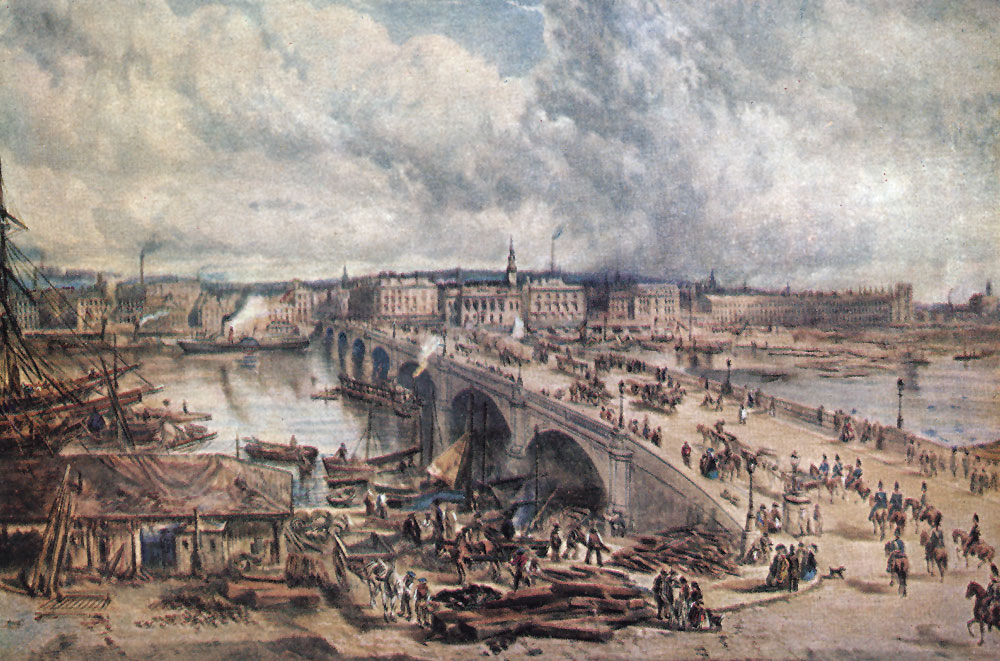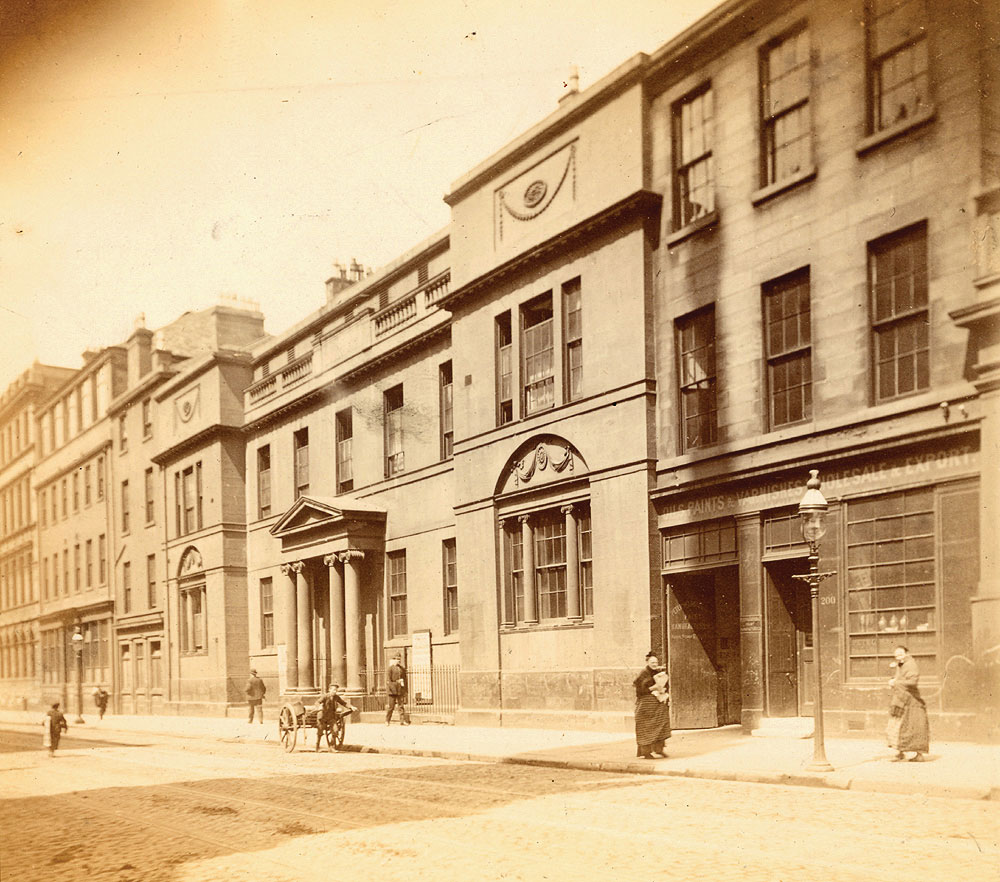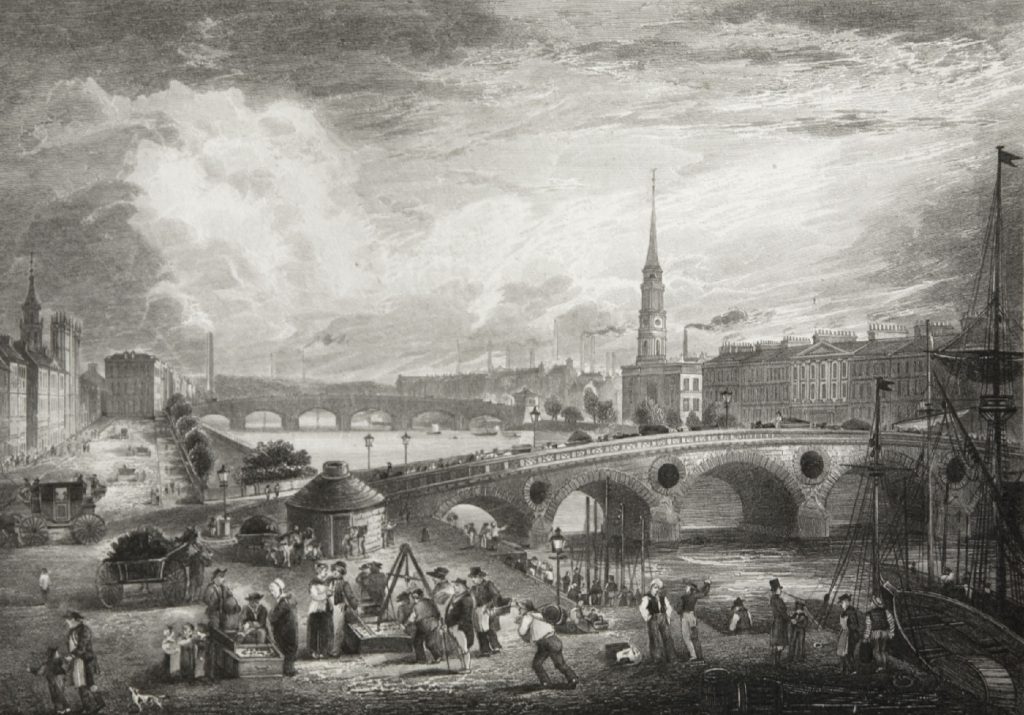The struggle against the evils of slavery did not end in 1807. The treatment of the slaves on the plantations in the West Indies did not improve.
The atmosphere produced by war with France, a fear of political agitation and bans on organised protest reduced the abolitionist campaign to the sidelines of politics until 1814. French attempts to re-enter the slave trade re-ignited the campaign.
The London Society launched another campaign in 1814 and, with around 750,000 citizens signing 1,370 petitions, this became the largest protest Britain had ever seen. In Scotland, the response was strong: 141 petitions were sent from sixty-seven communities, including all the major cities. Large public meetings were held in Edinburgh and Glasgow calling for an immediate end to the French proposals1.
The battle, however, did not have the same evangelical fervour as it had in 1792. The debate was marked by a new tactics. Apologists for the plantation owners published a series of personal accounts of life in the colonies. Writers such as Alexander Barclay, Archibald Dalzel, James Adair and John Stewart printed surveys of life in Africa, Jamaica and Antigua. A series of claims were made in defence of slavery. Conditions, it was argued, had improved. Plantation life was compared to the brutal working conditions of miners and agricultural labourers at home, whilst the ‘paternalistic’ role of plantation owners who brought Christianity as well as benevolence to their slaves was emphasised.
Africa was described as being in a ‘barbaric state,’ devoid of civilisation. The stance was regularly reflected in the Glasgow Courier, which was sympathetic to West India interests. In 1826 it claimed:
“We have hitherto failed completely in Africa. And why have we failed? Because we have mistaken the nature of the population of Africa, and the condition of Africa. In short, we have put the effect for the cause – that the European slave trade is the cause of African barbarity, ignorance, superstition and brutality, whereas it is these evils which are the cause of African slavery, and the African slave trade.”2
The moral crusade had been turned on its head.
The defence lines of West Indies trade were shored up in the years after 1807. The Glasgow West India Association was founded at a meeting held in the Tontine Tavern by twenty planters and merchants in October of the same year, just seven months after the passage of the Abolition Act.

The merchants had returned to the spiritual home of the tobacco lords, stirring up memories of the Golden Age, creating a fortress against mounting abolitionist attacks. James Ewing, one of the last ‘West Indians’ in Glasgow took a leading role. The Glasgow West India Association eventually became the strongest pro-slavery group outside of London. It vigorously opposed the passing of the Abolition Act in 1833. The Association case was clear: conditions on the plantations had markedly improved and owners were ‘paternalistic’ towards slaves, who lived in ‘comfort and happiness’.
The Association, like the abolitionists, made extensive use of the power of print to further its cause. The Glasgow Courier became vocal in support for the pro-slavery movement, particularly so when James MacQueen (1778-1870) was its editor in the 1820s.MacQueen, a former plantation overseer in Grenada, was on the Association’s payroll.
Leading abolitionists were criticised, whilst plantation owners and conditions received fulsome praise. Accounts of visitors from Glasgow to plantations and overseer journals and letters were all printed to demonstrate the folly of the abolition movement. MacQueen supported this sentiment in an editorial:
“We have failed in our attempts to render Africa any essential service, because we have rejected the advice of men practically acquainted with that country, and listened to the councils of weak interested theorists.”3
The battle for public opinion was matched by the organisation of anti-slavery groups and individuals across Britain who combined with the sole aim of smashing not just the trade but the practice of slavery in the colonies. The Society for the Mitigation and Gradual Abolition of Slavery throughout the British Dominions was founded in London in 1823, by Zachary Macauley (1768–1838), son of a Church of Scotland minister and a former governor of Sierra Leone, and Thomas Fowell Buxton (1786-1845), who took on Wilberforce’s role as leader of the abolitionist movement in the House of Commons after Wilberforce retired in 1825.
This new movement’s long-term aim of gradual abolition was perhaps pragmatic and it sought to join forces with societies across Britain. Anti-slavery societies were established at Edinburgh, Aberdeen and Glasgow in the 1820s. One of the founders of the Glasgow Anti-Slavery Society was Dr Ralph Wardlaw (1779-1853), a Congregationalist Minister who had matriculated at Glasgow University at the age of eleven.
Local societies became the focus of anti-slavery agitation, organising petitions, printing pamphlets and holding meetings, with the aim of mobilising public opinion, as in the 1792 campaign. There were sporadic petitions sent in 1823, 1824 and 1825 but action on a national scale was slow to materialise.
In Glasgow, the slow pace of abolitionist activity can partly be explained by the climate of fear created by the Glasgow West India Association and its mouthpiece, The Glasgow Courier. The Glasgow Anti-Slavery Society became circumspect in the mid-1820s, a period of economic downturn when it stopped holding public meetings.
Pro-slavery strategy took direct forms of action; both the King and the House of Commons received pro-slavery petitions from Glasgow merchants in the 1820s. But the West India Association failed in its attempts to copy abolitionist tactics by mounting a national campaign. The lack of broad support for the West Indian cause was in direct contrast to the breadth of public backing for the anti-slavery movement. In Glasgow, opinion was firmly behind the abolitionists.
The extent of public backing for abolition was demonstrated by the petitioning frenzy that overcame Scotland in 1826. Around forty-six petitions were sent from all major urban centres, including Glasgow where signatures were collected at twenty churches and eighteen shops. A petition was sent to Parliament with 39,000 signatures, which represented a quarter of the total population – an astounding figure. Students from the university also sent a petition.
Around this time, an escaped slave was said to have positioned himself on the Jamaica Street Bridge, displaying a placard detailing his experience of living as a slave in the plantations. The placard described his personal horrors and he made a direct appeal for public help. If true, it is ironic he should have chosen the Jamaica Street Bridge since its very name was a testament to the chattel slavery in the sugar plantations in which so many of his brothers died.

The campaign to abolish slavery received fresh impetus in late 1830. A single speech, made in Edinburgh can be viewed as changing the path of the British abolition movement. Dr. Andrew Thomson, a Church of Scotland minister, called for an immediate end to slavery in the British colonies, instead of the gradual process which had already taken a generation.
Thomson’s speech gave new impetus to the movement. 388 petitions calling for immediate abolition were sent from Scotland alone in late 1830 and early 1831. Another speech made in Glasgow a month later had a rather different effect. Dr Ralph Wardlaw also called for immediate abolition in a forceful address delivered to the Glasgow Anti-Slavery Society. Attendance at his church fell away drastically as a result and he was vilified in The Glasgow Courier. It was a brave crusade by Wardlaw in the face of West Indian interests. Even old friends deserted him.
West Indian commercial interests in Glasgow did not surrender without a fight. Although by this stage, imminent abolition was a virtual fait accompli, a campaign was mounted by the West India Association for financial compensation for the plantation owners. The colonial debate in Glasgow took place against a background of real tension, which escalated into violence.
A debate was held in January 1833 in the Andersonian Library in George Street (which eventually would become part of the modern Strathclyde University), to discuss the petitioning campaign ‘against slavery in our West Indian colonies’. Apologists argued that slaves lived in similar conditions to Scottish labourers and had ‘reasonable’ working hours. The formal debate descended into violence after a disagreement over the length of time allocated to each speaker. Afterwards, The Glasgow Courier published a letter branding the students as ‘little rosy faced loons’ who had armed themselves with batons to attack pro-slavery supporters in the audience.4

The opposition was to no avail. Further petitions were sent from Scotland and the Act for the Abolition of Slavery throughout the British Colonies was passed by Parliament in August 1833. Slavery was subsequently abolished in August 1834, partly due to the support of the middle class M.P.s who had entered Parliament after the Great Reform Act of 1832.
Abolition came at a price; preferential tariffs were introduced for British sugar traders. A compensation package of £20 million was given to the plantation owners and a so-called apprenticeship scheme allowed them to keep their slaves until 1838. The agent in London of the Glasgow West India Association unsuccessfully pressed for a further thirteen years delay. It was the final attempt by West Indian interests to squeeze the last few drops of slavery-tainted, sugar-coated wealth from the colonies. They consoled themselves by the size of the compensation – almost thirteen times the total annual profits of the British colonies.

Next section:
References
- Iain Whyte, Scotland and the Abolition of Black Slavery, 1756-1838, 2007 p148
- The Glasgow Courier, 10 January 1826.
- The Glasgow Courier, 9 January 1826.
- The Glasgow Courier, 23 January 1833.